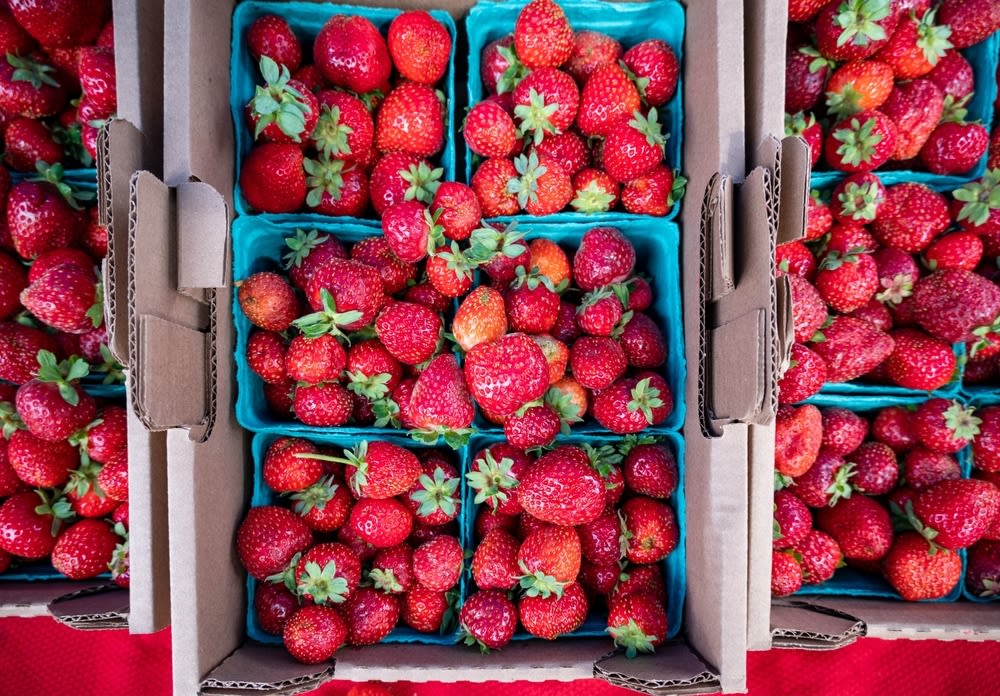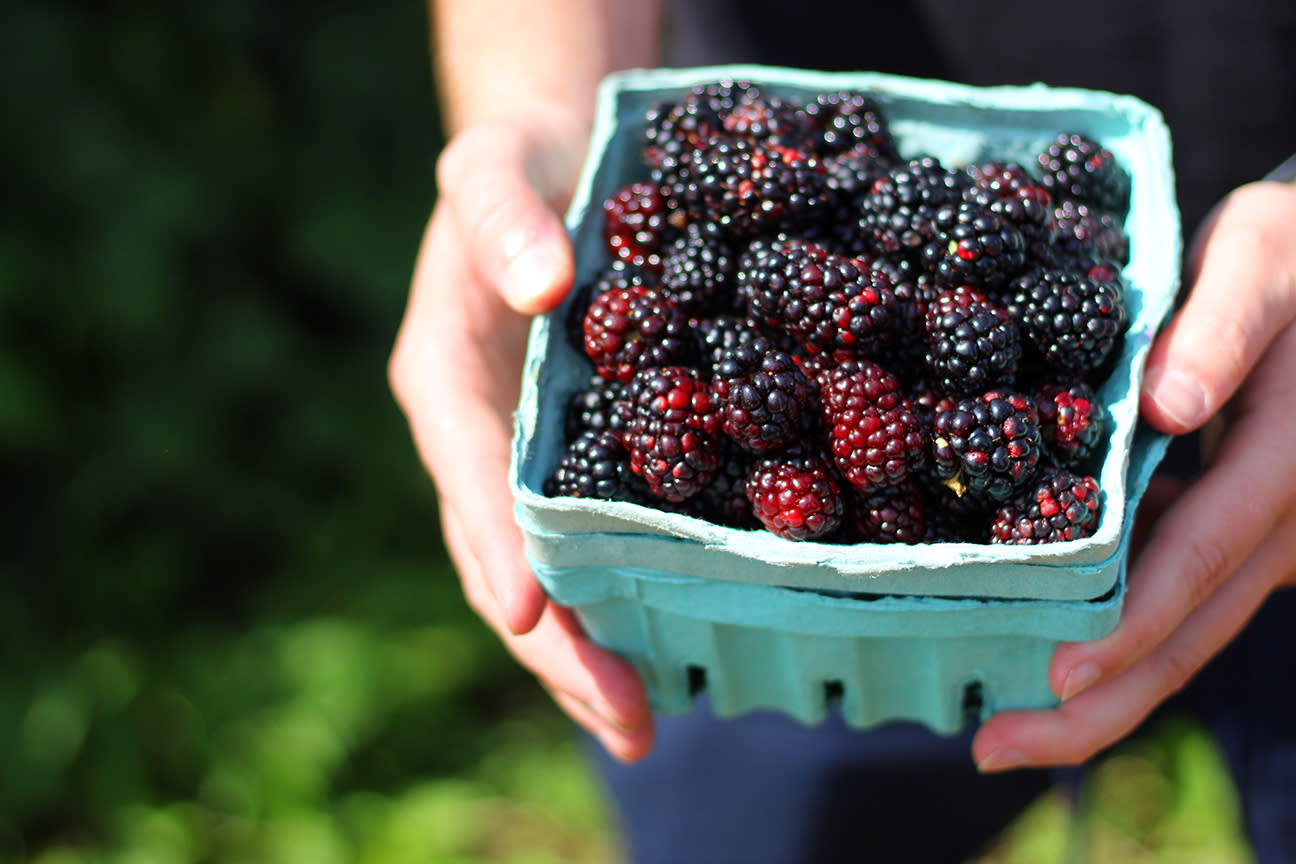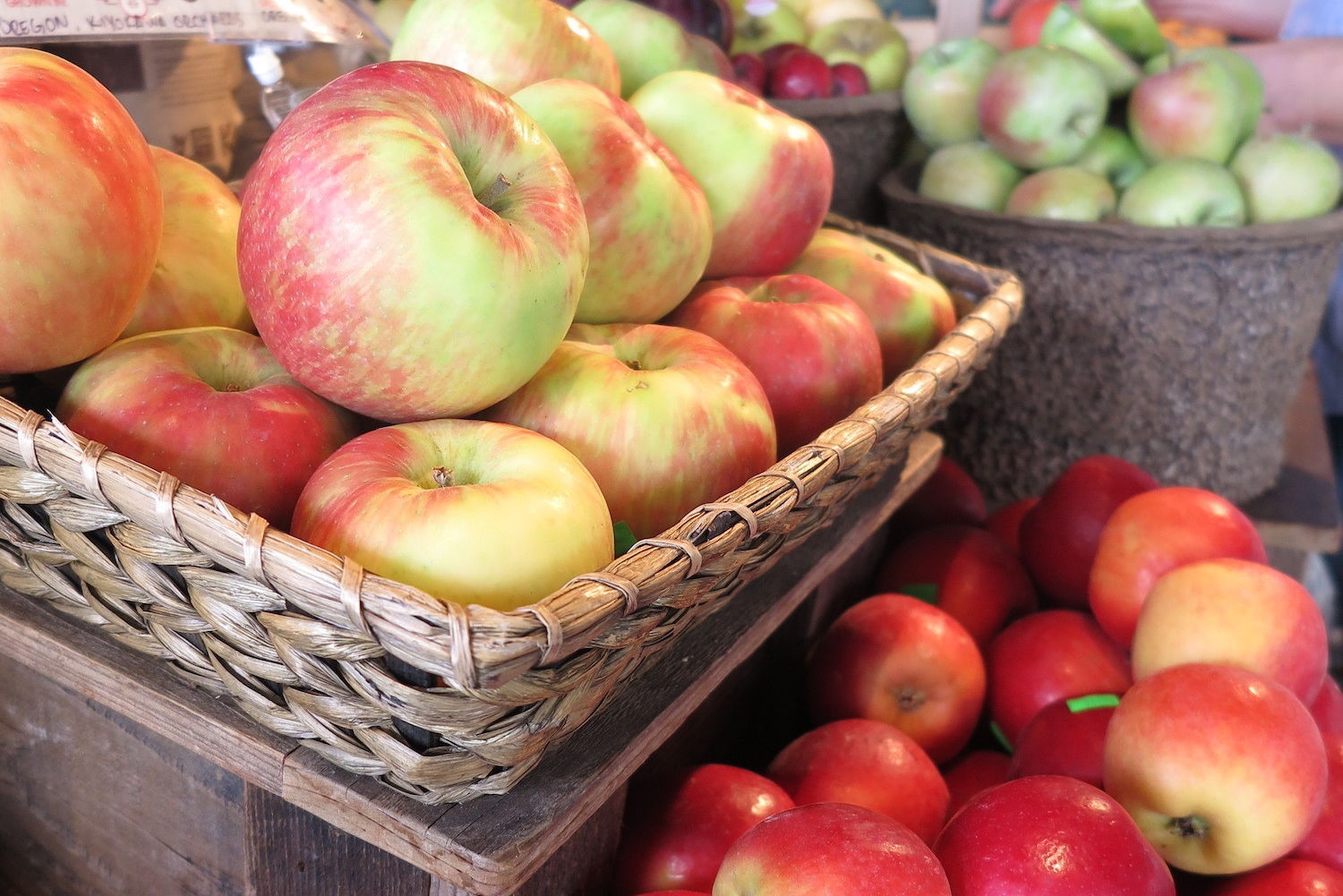It's Not Your Imagination—This Is a Tough Year for Oregon Summer Fruit

Strawberries are the quintessential Oregon summer fruit. This year has been a tough one for their flavor and quantity, thanks to unusual weather patterns.
The strawberries were the tell.
Normally, Oregon strawberries are summer’s first calling card, petite, wine-red Hoods and candy-colored Albions heralding the long-awaited return of the sun.
This year, what made it to markets was—in many cases—a flavorless, water-logged shadow of one of the state’s most celebrated berries, courtesy of a surprise April cold snap followed by an exceptionally rainy spring. That weather now threatens to limit fruit supplies into February of 2023, costing the state’s farmers millions of dollars.
“Peaches, plums, apples, pears—they're the ones really subject to changes in weather patterns,” says Josh Alsberg, who sells produce at Rubinette, the exceptionally well-sourced green market inside Northeast Portland’s Providore.
Randy Kiyokawa, who grows over 120 apple varietals at Kiyokawa Family Orchards in Parkdale, in the Hood River Valley—along with an impressive spread of stone fruits—says the issue actually tracks all the way back to January’s spring-like weather.
The unseasonal warmth brought his trees out of dormancy early. “I just knew,” says Kiyokawa. “I was like, ‘oh this is not good.’” The kickstarted growing season put his orchards in a vulnerable spot when the spring frost hit. The sustained rain kept many flowers too wet to be pollinated, washed away their pollen, or damaged the flowers that would have gone on to become fruit.
April’s weather event didn’t completely destroy the year’s crop, but it severely depleted both the fruits that have already been harvested and the ones still hanging green on the trees. Come fall, Kiyokawa expects to have anywhere between 20 and 80 percent of his usual apple yields, depending on the varietal.
Such reduced yields have made sourcing difficult for shops like Alsberg’s. Most farms have prioritized the farmer’s markets in response to the drastically reduced crop, a more profitable option than wholesaling.
“Seventy to 80 percent of the farms are down to half of what’s normally available,” says Alsberg. For example, he had planned to order 50 cases of strawberries from Noti-based Wintergreen Farm this year, traditionally one of the state’s top producers; seemingly overnight, that turned into zero.
Cherries, currently on stands and at u-pick farms, were the next sign. Usually the first of the orchard crops to hit shelves, their season forecasts the rest. The cherries had made it to fruit when the rain hit, but with all of the excess water, the fruit bloated and split on the tree. “It’s probably edible, but not the kind of thing people are going to want to pay five, six, seven-dollars a pound for—so they call that a loss,” says Alsberg.
Kiyokawa says he had 10 inches of snow on his cherry crop, which yielded only a third of what he was expecting.
Plums, which are usually an interim crop for Kiyokawa, he says, are a wash: he reports less than a 5 percent crop, saying “the birds will probably get to them before they can get ripe.”
Kiyokawa is cautious with future predictions, since he says there’s still plenty that could go wrong before fall fruits like apples and pears can be harvested. (“We could have hail; high winds could put my crop on the ground. We could have a week of 100-degree weather damage and sunburn the fruit.”)
Farmers are used to “weathering the weather,” as Alsberg puts it. But a chain of unseasonal weather events has put local farmers in what feels like an unprecedented situation. “It’s probably happened before,” says Kiyokawa, who’s been farming since 1987. “But cold and wet for three weeks . . . the climate is changing.”
Still, all of the upkeep and operational expenses remain. Orchards are fickle, requiring extensive pruning, insect and disease control, fertilization and irrigation. “Even though we may not have a crop, or enough to really ‘make it,’ all of our costs are still there,” Kiyokawa says. It’s these same trees that will produce next year’s crop and any neglect because of this year’s abysmal season would squander the 2023 crop.
And the effects trickle down. If there’s no fruit, there’s no work for pickers, sorters, or drivers; the effects reach all the way to retailers like Alsberg.
There are some glimmers of hope. Apples, which mark the end of the orchard season, are also the furthest from the spring frost, and may be less impacted.
Specialties like the red-fleshed mountain rose are expected to produce about half of a normal crop, and chef-favorite Ashmead’s kernel, Kiyokawa says, may only make it to the market for one week.
But lunchbox standbys like crimson crisp and galas are in good supply thus far, he says—about 75 percent of a normal crop, which will reduce the length of the season, but likely not the quality of the fruit.




